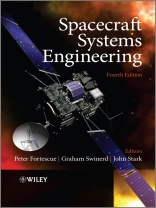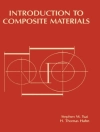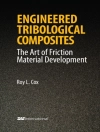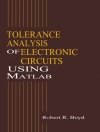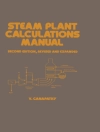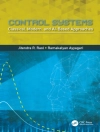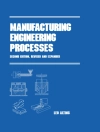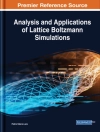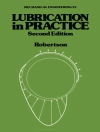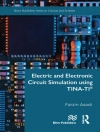This fourth edition of the bestselling
Spacecraft Systems Engineering title provides the reader with comprehensive coverage of the design of spacecraft and the implementation of space missions, across a wide spectrum of space applications and space science. The text has been thoroughly revised and updated, with each chapter authored by a recognized expert in the field. Three chapters – Ground Segment, Product Assurance and Spacecraft System Engineering – have been rewritten, and the topic of Assembly, Integration and Verification has been introduced as a new chapter, filling a gap in previous editions.
This edition addresses ‘front-end system-level issues’ such as environment, mission analysis and system engineering, but also progresses to a detailed examination of subsystem elements which represents the core of spacecraft design. This includes mechanical, electrical and thermal aspects, as well as propulsion and control. This quantitative treatment is supplemented by an emphasis on the interactions between elements, which deeply influences the process of spacecraft design.
Adopted on courses worldwide, Spacecraft Systems Engineering is already widely respected by students, researchers and practising engineers in the space engineering sector. It provides a valuable resource for practitioners in a wide spectrum of disciplines, including system and subsystem engineers, spacecraft equipment designers, spacecraft operators, space scientists and those involved in related sectors such as space insurance.
In summary, this is an outstanding resource for aerospace engineering students, and all those involved in the technical aspects of design and engineering in the space sector.
表中的内容
List of Contributors xiii
Preface to the Fourth Edition xv
Preface to the Third Edition xix
Preface to the Second Edition xxi
Preface to the First Edition xxiii
List of Acronyms xxv
1 INTRODUCTION
John P. W. Stark, Graham G. Swinerd and Adrian R. L. Tatnall
1.1 Payloads and Missions 3
1.2 A System View of Spacecraft 4
1.3 The Future 9
2 THE SPACECRAFT ENVIRONMENT AND ITS EFFECT ON DESIGN
John P. W. Stark
2.1 Introduction 11
2.2 Pre-Operational Spacecraft Environments 11
2.3 Operational Spacecraft Environments 17
2.4 Environmental Effects on Design 40
3 DYNAMICS OF SPACECRAFT
Peter W. Fortescue and Graham G. Swinerd
3.1 Introduction 49
3.2 Trajectory Dynamics 51
3.3 General Attitude Dynamics 58
3.4 Attitude Motion of Specific Types of Spacecraft 63
3.5 Oscillatory Modes 71
3.6 In Conclusion 73
Appendix: The Inertia Matrix 73
4 CELESTIAL MECHANICS
John P. W. Stark, Graham G. Swinerd and Peter W. Fortescue
4.1 Introduction 79
4.2 The Two-body Problem—Particle Dynamics 81
4.3 Specifying the Orbit 92
4.4 Orbit Perturbations 93
4.5 Restricted Three-body Problem 106
5 MISSION ANALYSIS
John P. W. Stark and Graham G. Swinerd
5.1 Introduction 111
5.2 Keplerian Orbit Transfers 114
5.3 Mission Analysis 116
5.4 Polar LEO/Remote-Sensing Satellites 122
5.5 Satellite Constellations 127
5.6 Geostationary Earth Orbits (GEO) 133
5.7 Highly Elliptic Orbits 143
5.8 Interplanetary Missions 147
6 PROPULSION SYSTEMS
J. Barrie Moss and John P. W. Stark
6.1 Systems Classification 177
6.2 Chemical Rockets 180
6.3 Spacecraft Propulsion 202
6.4 Electric Propulsion 206
7 LAUNCH VEHICLES
J. Barrie Moss and Graham E. Dorrington
7.1 Introduction 221
7.2 Basic Launch Vehicle Performance and Operation 222
7.3 Spacecraft Launch Phases and Mission Planning 231
7.4 The Ariane 5 Launch Vehicle 236
7.5 US Crewed Launch Systems 239
7.6 Small Launchers and Reusable Sub-Orbital Vehicles 242
7.7 Re-Entry into Earth’s Atmosphere 244
7.8 Specific Launch Costs and Reliability 247
8 SPACECRAFT STRUCTURES
John M. Houghton
8.1 Introduction 251
8.2 Design Requirements 251
8.3 Material Selection 256
8.4 Analysis 263
8.5 Design Verification 274
8.6 Impact Protection 276
8.7 Configuration Examples 278
8.8 The Future of Space Structures 285
9 ATTITUDE CONTROL
Peter W. Fortescue and Graham G. Swinerd
9.1 Introduction 289
9.2 ACS Overview 290
9.3 The Spacecraft Attitude Response 294
9.4 Torques and Torquers 301
9.5 Attitude Measurement 309
9.6 ACS Computation 321
10 ELECTRICAL POWER SYSTEMS
John P. W. Stark
10.1 Introduction 327
10.2 Power System Elements 328
10.3 Primary Power Systems 330
10.4 Secondary Power Systems: Batteries 345
10.5 Power Management, Distribution and Control 347
10.6 Power Budget 350
11 THERMAL CONTROL OF SPACECRAFT
Chris J. Savage
11.1 Introduction 357
11.2 The Thermal Environment 358
11.3 Thermal Balance 362
11.4 Thermal Analysis 366
11.5 Thermal Design 371
11.6 Thermal Technology 375
11.7 Thermal Design Verification 386
11.8 Example of Satellite Thermal Design—XMM/Newton 390
12 TELECOMMUNICATIONS
Ray E. Sheriff and Adrian R. L. Tatnall
12.1 Introduction 395
12.2 Techniques of Radio Communications 400
12.3 The Communications Payload 422
12.4 Conclusion 436
13 TELEMETRY, COMMAND, DATA HANDLING AND PROCESSING
Nigel P. Fillery and David Stanton
13.1 Introduction 439
13.2 System Architecture 440
13.3 Telemetry Data Formatting 442
13.4 Telecommand 449
13.5 Communication Techniques and Protocols 455
13.6 On-Board Data Handling (OBDH) and Processing 458
13.7 Technology 464
13.8 Tools and Controlling Documents 466
14 GROUND SEGMENT
Franck Chatel
14.1 Introduction 467
14.2 The Ground Station 468
14.3 Flight Dynamics 475
14.4 The Ground Data System 480
14.5 The Flight Operations System 483
15 SPACECRAFT MECHANISMS
Guglielmo S. Aglietti
15.1 Introduction 495
15.2 One-Shot Devices 497
15.3 Continuously and Intermittently Operating Devices 507
15.4 Components 513
15.5 Materials 520
15.6 Tribology 521
15.7 Testing and Verification 523
15.8 Conclusion 524
16 SPACECRAFT ELECTROMAGNETIC COMPATIBILITY ENGINEERING
Ken M. Redford
16.1 Introduction 527
16.2 Examples of EMC Problems 528
16.3 EMC Specifications 528
16.4 Electromagnetic Compatibility—Terms and Definitions 529
16.5 EMC Fundamentals 530
16.6 The Systems Approach to EMC 531
16.7 EMC Categories 531
16.8 Electrostatic Discharge 535
16.9 Spacecraft Grounding Schemes 536
16.10 Major Causes of Spacecraft EMC Problems 541
16.11 Analysis Methods for Spacecraft EMC Engineering 542
17 ASSEMBLY, INTEGRATION AND VERIFICATION
Terry Ransome
17.1 Introduction 545
17.2 Some Definitions 545
17.3 The Verification Plan 547
17.4 Relationship between Analysis and Test 551
17.5 The AIV Plan 552
17.6 Testing: General 553
17.7 Test Types 557
17.8 Model Philosophy 561
17.9 Build Standards and Applications 564
17.10 Ground Support Equipment 567
17.11 Checkpoints in the AIV Programme 571
17.12 Verification Closeout 572
17.13 Launch Preparation 572
17.14 Conclusion 573
18 SMALL SATELLITE ENGINEERING AND APPLICATIONS
Martin N. Sweeting and Craig I. Underwood
18.1 Introduction 575
18.2 Small Satellite Design Philosophy 579
18.3 Small Satellite System Design 580
18.4 COTS Components in the Space Environment 583
18.5 Microsatellite Platforms 587
18.6 Minisatellite Platforms 590
18.7 Nanosatellite Platforms 590
18.8 Affordable Launches for Small Satellites 592
18.9 In-Orbit Operations 594
18.10 Small Satellite Applications 597
18.11 Picosatellites and Recent Advances in Miniaturization 603
18.12 Conclusion 604
19 PRODUCT ASSURANCE
Geoffrey Hall
19.1 Introduction 607
19.2 Product Assurance in a Project 609
19.3 Reliability/Dependability 613
19.4 Parts 618
19.5 Materials and Processes 622
19.6 Product Assurance in Manufacturing, AI&V 626
19.7 Safety 634
19.8 Product Assurance in Operations 637
19.9 Software Product Assurance 638
19.10 PA in Technology Developments 640
19.11 The Assurance Message 642
20 SPACECRAFT SYSTEM ENGINEERING
Adrian R. L. Tatnall, John B. Farrow, Massimo Bandecchi and C. Richard Francis
20.1 Introduction 643
20.2 System Engineering 644
20.3 Concurrent Engineering 654
20.4 A Case Study: Cryosat 667
20.5 Conclusion 678
Index 679
关于作者
Dr Graham Swinerd is a Reader in Astronautics within the School of Engineering Sciences at the University of Southampton where he teaches courses in aerospace design, spacecraft systems design and astronautics. Prior to joining Southampton in 1987 he was employed by British Aerospace Space Systems, Stevenage. His research interests include orbit dynamics, space mission analysis, spacecraft attitude dynamics and control and space systems engineering.
Professor John Stark joined QMUL as Professor of Aerospace Engineering in 1992. This followed previous appointments at UMIST as a lecturer (1980/83), at Southampton in the Department of Aeronautics and Astronautics (1983/90) as a senior lecturer, and then an executive post at BAe Space Systems Ltd (1990/92). He has served as Head of Department at QMUL from 1992 to 1999, and 2003 to date. He teaches courses in the principles of spacecraft engineering, spacecraft design and space mission engineering, and his areas of expertise include electrospray technology, spacecraft propulsion, spacecraft design and direct printing.
Peter Fortescue retired as a Professor in the Astronautics Group, Department of Engineering Sciences at Southampton University in 1989.
